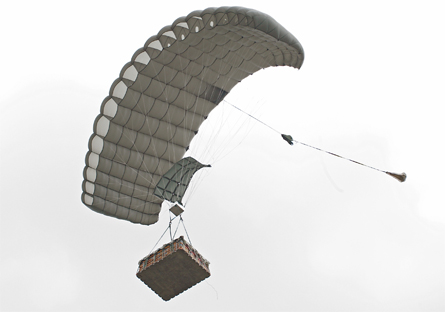Germany's WTD-61 test unit has given its approval to the operational use in Afghanistan of a new cargo delivery system, which has been unusually categorised as an unmanned air vehicle.
Described as a ram-air cargo parachute system and developed by EADS's Cassidian business unit, the "ParaLander" design has been the subject of recent "extensive flight testing" conducted from Manching in Germany, the company says.
By using the equipment from its current C160 Transall and future Airbus Military A400M transport aircraft, the German air force will be able to "ensure the pinpoint delivery of sensitive mission equipment, humanitarian aid and supplies fully automatically from the air without damage," Cassidian says.
 |
|---|
© Cassidian |
Its current design has a payload capacity of 1,000kg (2,200lb), and can glide for up to 27nm (50km) following its release from an altitude of 32,800ft (10,000m). Cassidian says the growth path for the ParaLander could in time enable it to carry a cargo of more than 5,000kg.
 |
|---|
© Cassidian |
Following its release, the ParaLander's embedded control unit steers the vehicle to its intended target area by using GPS guidance and servomotors. Its developer says a laser altimeter-activated mechanical system is then employed to slow the load's descent before landing.
The German defence ministry has so far ordered five ParaLander systems, with the equipment cleared for use in support of the nation's contribution to the NATO-led International Security Assistance Force in Afghanistan. "The procurement of additional systems for the German armed forces is envisaged," says Cassidian.
Source: Flight International























